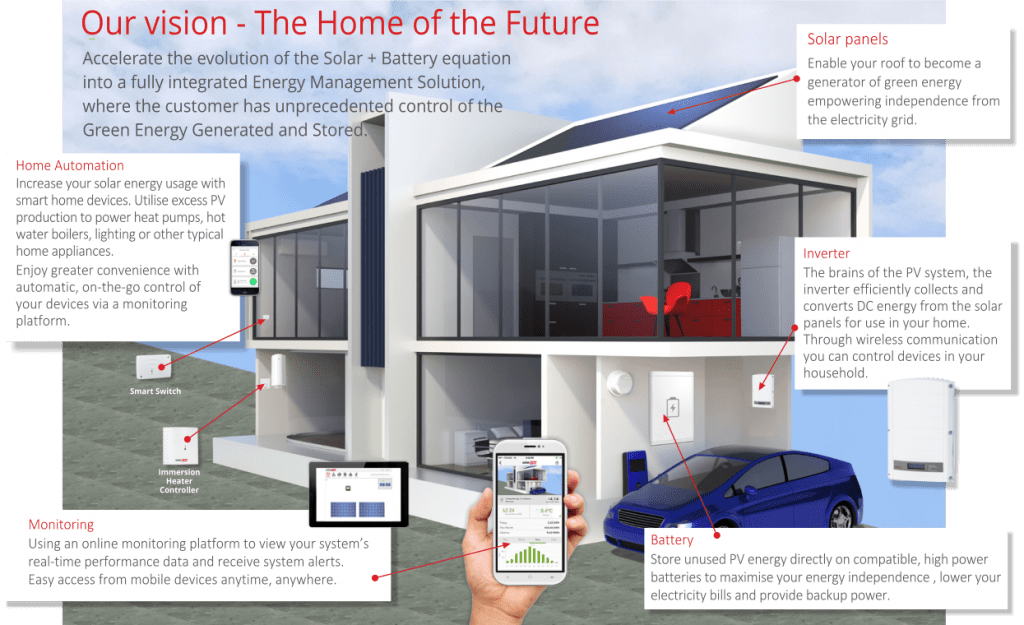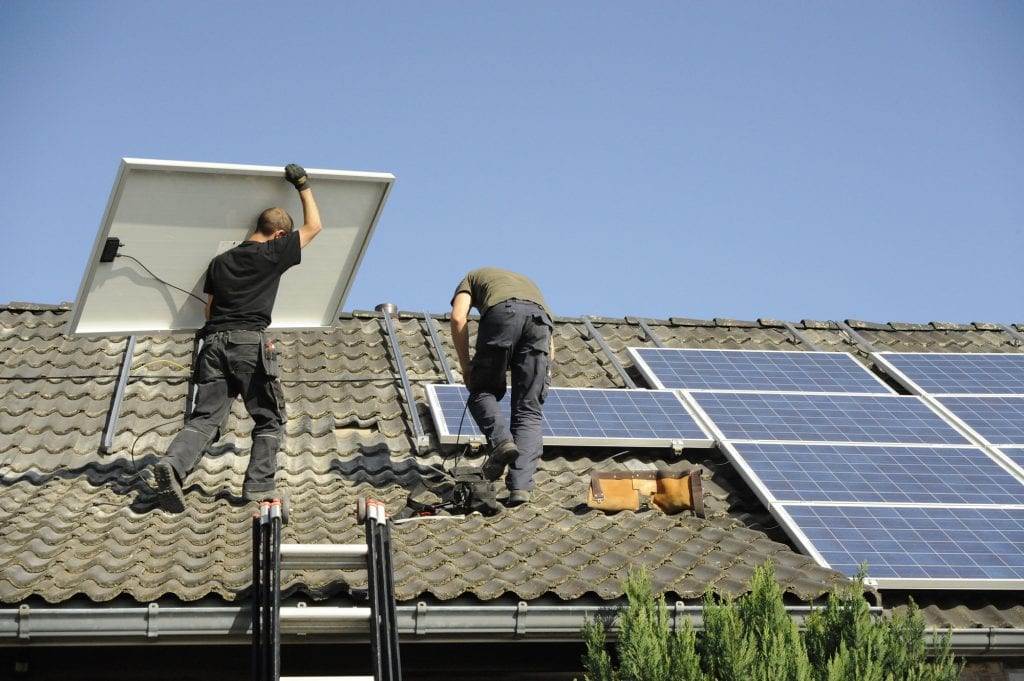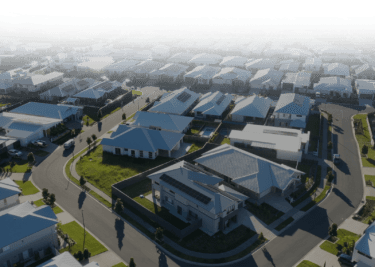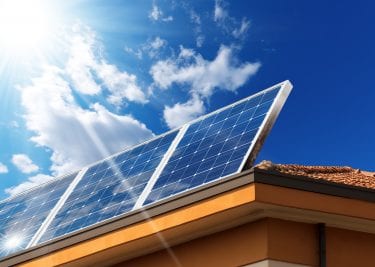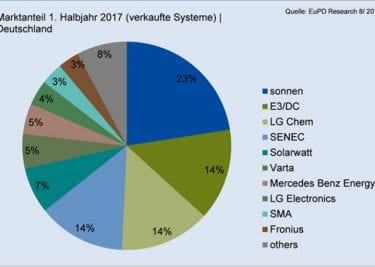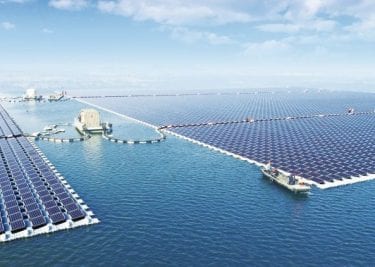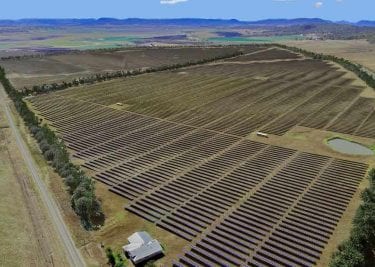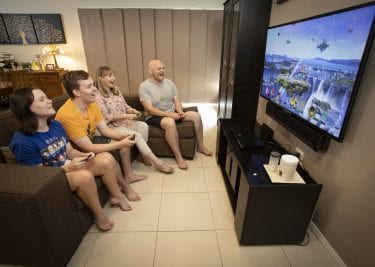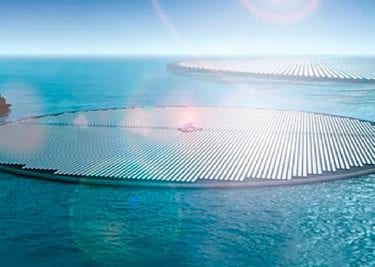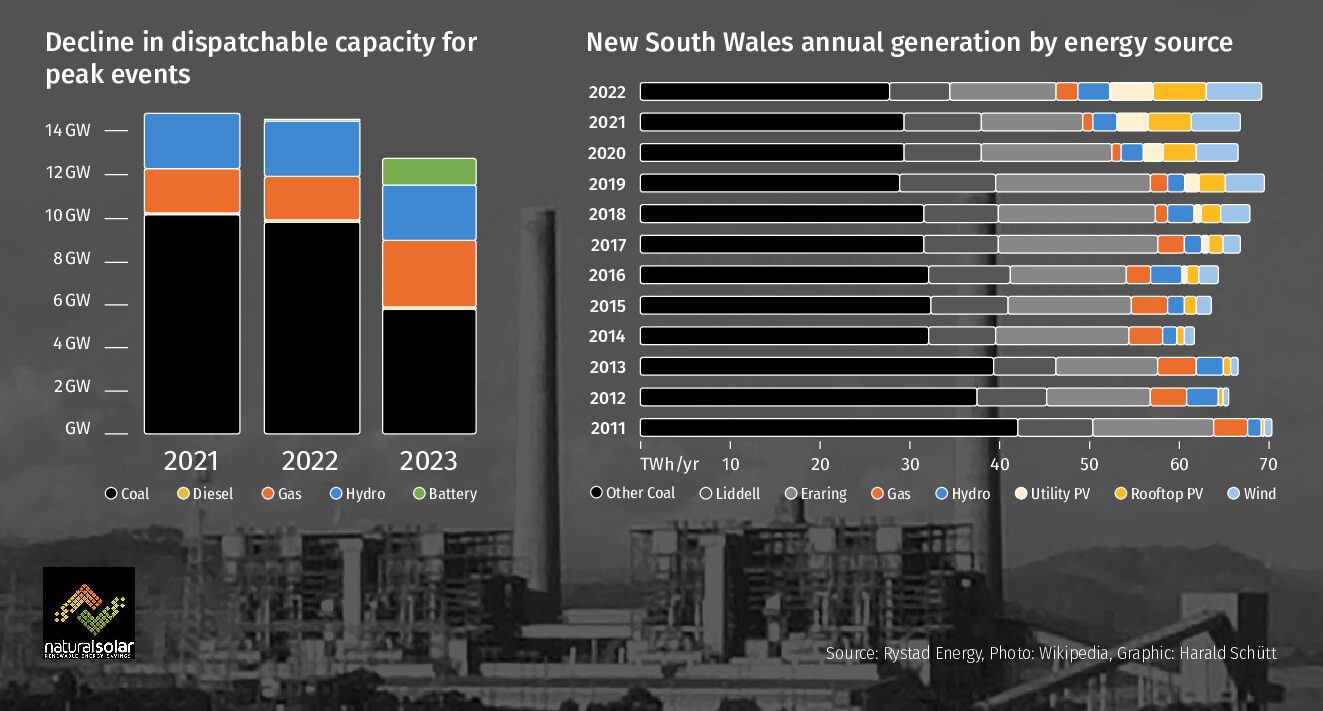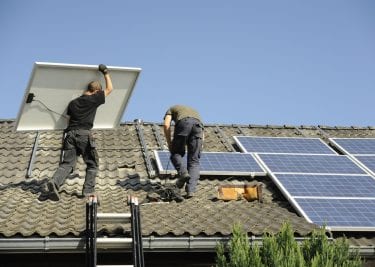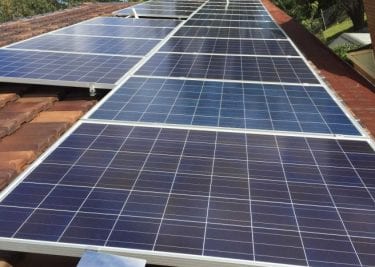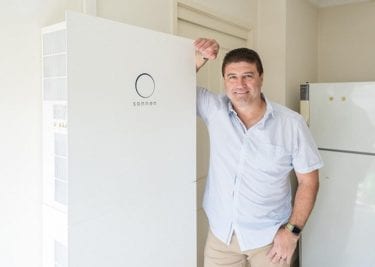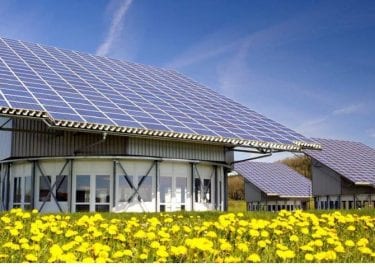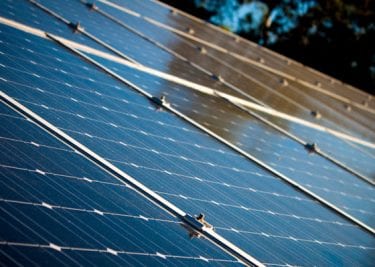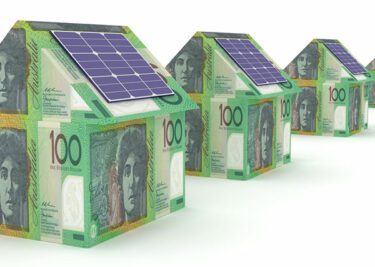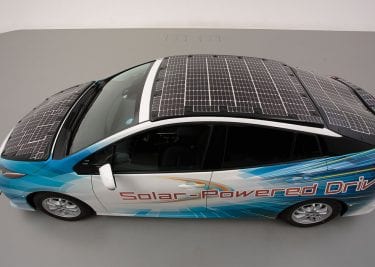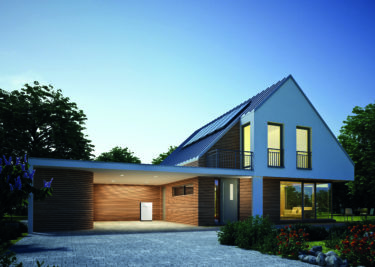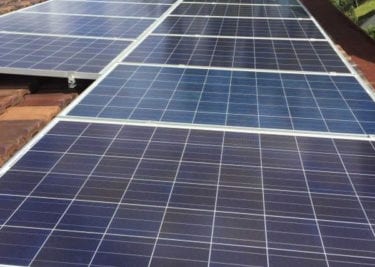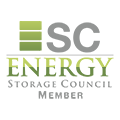Solar power is one of the fastest-growing sectors in the world. In Australia last year, it accounted for 5.2% of the total national electrical energy production.
But what is solar power, how does it work, and why should you consider it? Let’s take a deep dive into the world of solar energy.
Solar power is an efficient source of renewable energy. It’s one that’s moving society toward a more sustainable, environmentally-conscious future, away from traditional energy generation methods that rely on fossil fuels.
And the benefits don’t stop there. Solar generation also hands the power (pun totally intended) back to you, the home-owner, by enabling you to generate and control your own electricity.
But how does solar power work? What do solar panels actually do? And – because let’s face it, we all need to think about the financial implications – can they really save you money in the long-term?
In this article, we’ll be ‘beaming a light’ onto all of these questions about solar power. We’ll explore the journey energy takes from the sun itself to solar panels, and then into inverters and possibly a home battery. And finally, we’ll lay out the grass roots, practical implications of solar power – both for you personally, and for the planet.
Ready? OK, time to talk about all things solar…
First, let’s look at solar energy
Solar energy is simply energy that’s created by the sun. With the right equipment, you can capture it and turn it into usable electricity for your home or business. And it’s currently the planet’s best source of renewable energy.
The total solar energy that Earth’s atmosphere, oceans and land masses absorb is somewhere around 3.85 yottajoules per year. And for those of us whose last maths class was a long time ago, that means ‘3.85 x 10 with TWENTY-ONE zeros following it’ joules.
Need a bit of context for that number? It means we get twice as much solar energy each year as we’ll ever get from every non-renewable earth-based resource (coal, oil, natural gas and mined uranium) combined.
One of the ways that the sun radiates energy is as tiny little packets of light energy called photons. And it’s these photons that many solar power systems aim to harness.
How is solar power different to solar energy?
Energy doesn’t count as ‘power’ until it’s in a form we can use. So solar power is solar energy that’s been transformed into usable electricity. This transformation can happen in one of two ways:
- Light (direct): this is the most common method. Panels full of photovoltaic (PV) cells turn light packets (photons) directly into electrical energy (volts). These panels are the ones you often see up on the roofs of houses and businesses.
- Heat (indirect): this method is usually only used in big, commercial operations. It involves capturing sunlight using lenses and mirrors, focusing it into a beam, then using it to heat water into steam that turns turbines to produce electricity.
How solar panels transform energy into power
When photons in the sunlight that shines down on your roof hit the PV cells in a solar panel, they knock a few electrons in each cell loose. If the panel is hooked up to the right equipment, those electrons all travel in the same direction, forming a direct electrical current (DC).
This DC energy then travels to a machine called an inverter, which converts it to alternating current (AC). That’s the same kind of electrical current your house already receives from the main grid. So once the electricity leaves your inverter, you can use it to boil your kettle, turn on your lights or heat your water.
If you convert more solar energy than your home needs, you have two choices. You can either:
- store it in a battery in your home
- sell it back to your power company for other homes and businesses to use.
If you choose Option #2, the power company will usually pay you a small amount for each extra kilowatt/hour that you produce.
Direct Current (DC) vs Alternating Current (AC) electricity
- In DC electricity, the electrons only travel in one direction. DC isn’t effective for day-to-day power, as it can be difficult to transform from one voltage to another, and hard to transmit over long distances.
- In AC electricity, the electrons keep switching directions. This allows them to move more effectively through power lines over long distances, and also makes the current’s voltage easier to change.
Understanding solar power systems: a quick primer
The main components of any solar power system are:
- Solar panels
- An inverter
- A racking system
- A battery
Let’s look at each of these in more detail and find out how they work together to create a typical home solar power system.
- Solar panels
The most important component in a solar panel is the same thing you’ll find in computers and other electronic devices – silicon chips. While you can’t eat these kinds of chips, they’re still pretty useful. Each chip forms a single solar cell, and a solar panel is really just many hundreds of solar cells all joined together.
Each solar cell is made from layers of a special kind of silicon called photovoltaic silicon (PV silicon). The cells are strung together to function as a single unit, then laminated onto a special type of solar glass, and set into lightweight aluminium framing.
This helps to protect them from the weather and other environmental impacts.
- Inverters
An inverter is a sophisticated machine that turns DC power into 230 volts of AC electricity – just like the power you get from the grid. The inverter is the element of your system that does most of the work in processing solar power. It’s a critical component: without it, your solar panels would convert all that solar energy into DC, then have nowhere to send it.
Inverters need to live in a shady spot that’s out of direct sunlight. That will make it last longer (and ensure you don’t cook it from the inside out!)
- Racking
A solar racking system is the framework that holds your solar panels in place. You want racking that can withstand the worst of Australia’s harsh weather to protect your investment.
Most Australian homes use a roof-mounted racking system. This uses your existing roof structure as a foundation for the panels, and is usually the most affordable option. However, you could also choose a ground mount for easy maintenance if you have the space available on your property.
- Battery
The final (and only optional) component of your solar power system is a battery. You can install a battery in your home to store the electricity that your system has generated. This means you can save any unused power you produce for another day.
This option is great on days where you use less, or even no, power – perhaps because you’re away on holiday. Without a battery, all the electricity you produce is ‘use it or lose it’. It either goes straight back into the grid (more about this later), or it’s wasted. With a battery, however, you can store any power you don’t end up using until you need it.
This can then be especially helpful if you have people staying with you, meaning your usage increases. It’s also great to tide you over during any not-particularly-sunny periods where you don’t produce as much power. In both of those cases, you can save money by drawing stored electricity from your battery rather than paying to get it from the main grid.
What’s in it for me? The personal benefits of going solar
Solar power has SO many advantages to offer. Here are just a few of them:
- It saves you money! Solar power can potentially make your dollars last longer in two ways:
- It reduces your power bill: because at least some (if not all) of your household electricity will come from your solar power system, you’ll end up using less from the main grid. That means you get to keep more of your hard-earned money for things like groceries, petrol or giant inflatable unicorns.
- Your electricity company may pay you for any unused power you generate: many power companies will credit you for every kW/h unit of electricity you generate that goes back into their grid system in what’s known as a ‘Feed-in tariff’.
- Low maintenance costs: home solar power systems have no moving components, which means they require little to no maintenance. Isn’t it nice to know you’ll be able to enjoy your system for years without continually paying to maintain it?
- Knowing that you’re stepping up and becoming part of the solution: as we’ll talk about in the next section, solar power is a truly renewable energy source. And it’s one that doesn’t pollute the environment, or contribute to the country’s carbon footprint. Installing even a small solar power system in your home means you’re contributing to Australia’s Renewable Energy Target.
The worldwide impact of switching to solar
“The future is green energy, sustainability, renewable energy.”
– Arnold Swarzenegger
There’s no doubt that solar power is better for the planet as a whole. But you might be surprised at just how many different ways switching to solar can improve people’s day-to-day lives across the globe…
- Cutting down fossil-fuel reliance and slowing climate change: sunshine is free and abundant. And unlike burning fossil fuels, using solar panels to turn light into electricity doesn’t generate greenhouse gases.
- Creating a better tomorrow: solar power can lower energy prices across the board, and can contribute to establishing a stronger, more stable energy future.
- Reducing water usage: most other forms of power generation use at least some water in the process. PV silicon panels require absolutely no water at all.
- Reducing air pollution: generating electricity from fossil fuels produces toxic gasses, including methane, which lower the air quality and can contribute to health problems.
- Making life better for communities around the world: solar energy can generate electricity or heat in areas without access to a power grid. It can also help to distil safe drinking water in places without access to water treatment facilities.
Join the solar revolution today
Improve the environment, reduce your carbon footprint and cut your energy costs with a solar power system.
Find out how much a solar power system for your home will cost.


